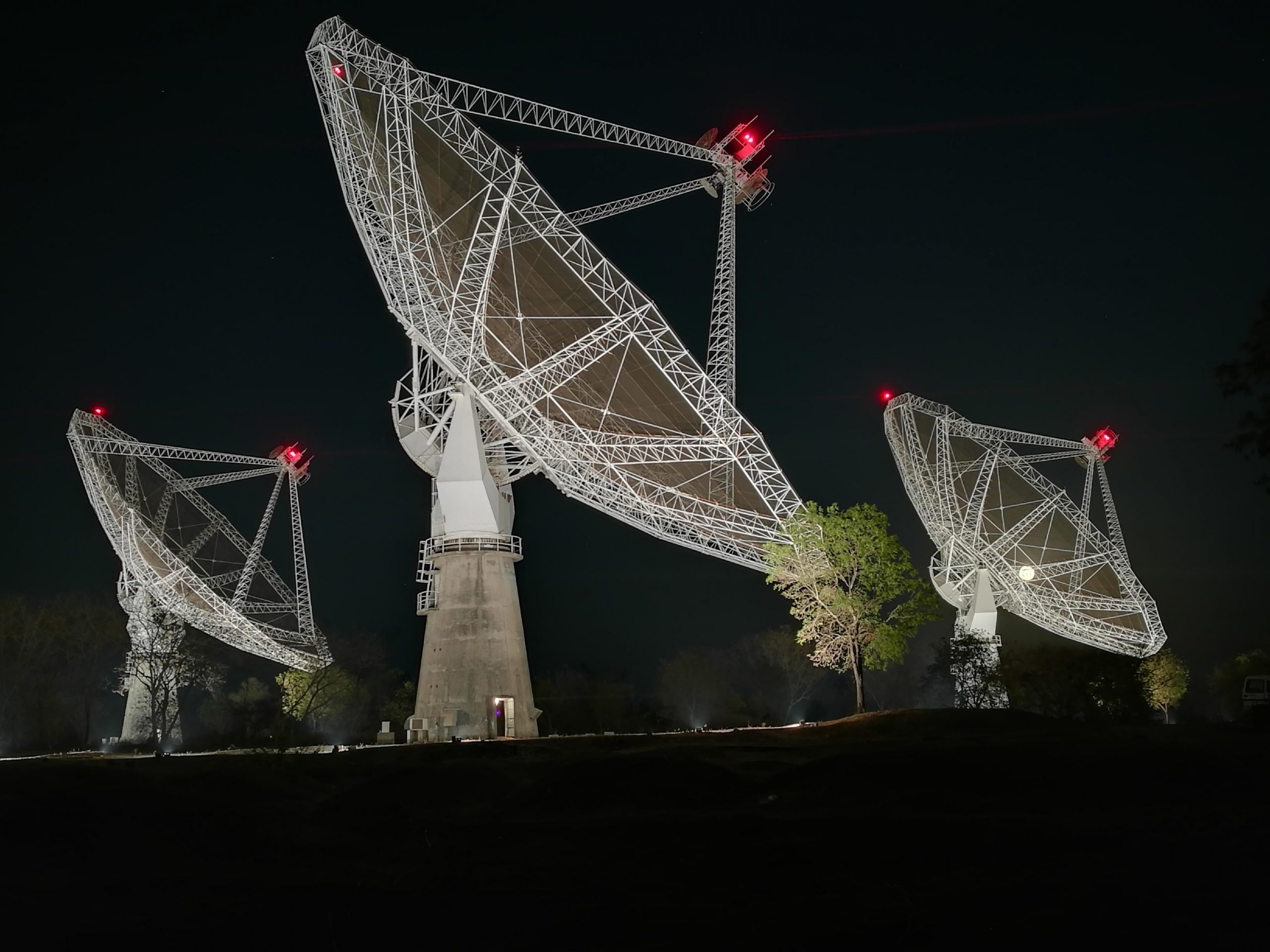The discovery is a significant breakthrough in understanding the gravitational wave spectrum, and it has opened a new window of exploration in astrophysics as well as deepened the conception of the Universe.
What is the uGMRT?
The Giant Metrewave Radio Telescope (GMRT) is among the six most sensitive radio telescopes in the world. It has an array of 30 fully steerable parabolic radio telescopes of 45 metre diameter, observing at metre wavelengths. It is also one of the largest radio telescope arrays in the world at low frequencies. It is an interferometric array with baselines of up to 25 kilometres and was upgraded with new receivers, after which it is also known as the upgraded Giant Metrewave Radio Telescope (uGMRT).
What is it used for?
Scientists from around the world use this radio telescope to observe and collect data regarding different astronomical objects including HII regions, galaxies, pulsars, supernovae, and sun & solar winds.
Most recently it was used to document ultra-low frequency gravitational waves. Some other notable discoveries made with this technology include:
- The most distant galaxy ever discovered, which is located 12 billion light years away, was discovered using the GMRT in August 2018.
- The radio telescope was used to observe the Ophiuchus Supercluster explosion, one of the biggest explosions in the universe in February 2020.
- The telescope picked up a radio signal which originated from 8.8 billion light years away in January 2023.
Where is it located?
The uGMRT is operated by the National Centre for Radio Astrophysics (NCRA), which is a part of the Tata Institute of Fundamental Research, Mumbai.
The uGMRT Observatory is located about 80 km north of Pune in Khodad, near Narayangaon which is around nine km from the telescope site.
The office of NCRA is located on the Savitribai Phule Pune University campus.
When was the radio telescope built?
The GMRT was the brainchild of the late Govind Swarup. It was conceived and built under Swarup’s direction between 1984 to 1996.
Since 2000 it has been extensively used to study the universe in low frequency.
Scientists from around 40 countries have used the radio telescope to obtain data that has contributed to several path-breaking discoveries.
A plan to upgrade the radio telescope was submitted during the financial planning of 2007-2012 and the first serious work towards achieving this began in 2010.
Subsequently, the updated telescope was called “upgraded Giant Metrewave Radio Telescope ” or uGMRT.
What new features were added to the uGMRT?
The main targets for the upgraded GMRT, according to a paper submitted on the new telescope by NCRA-TIFR in 2017, were:
- Seamless frequency coverage, as far as possible, from 50 to 1500 MHz, replacing the five limited bandwidth frequency bands of the original GMRT design
- Maximum instantaneous bandwidth of 400 MHz, instead of the 32 MHz bandwidth of the original GMRT design
- Improved receiver systems with higher G/Tsys and better dynamic range
- Versatile digital backend correlator and pulsar receiver catering to the 400 MHz bandwidth
- Revamped, modern servo system
- Sophisticated, next-generation monitor and control system
- Matching improvements in mechanical systems, electrical and civil infrastructure and computing resources.
The overall aim was to increase the sensitivity by up to three times and make it more powerful and versatile, which the radio telescope was able to achieve by 2018.
Budget and funding
TIFR is a national centre of the Government of India and comes under the umbrella of the Department of Atomic Energy.
According to records from the European Organization for Nuclear Research (CERN) from 2005, GMRT had cost around $15 million.
A report by Deccan Herald in 2015, stated that the entire upgrade of the radio telescope cost around Rs 60 crore.
Note:- (Not all news on the site expresses the point of view of the site, but we transmit this news automatically and translate it through programmatic technology on the site and not from a human editor. The content is auto-generated from a syndicated feed.))



